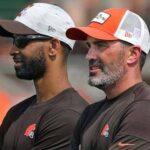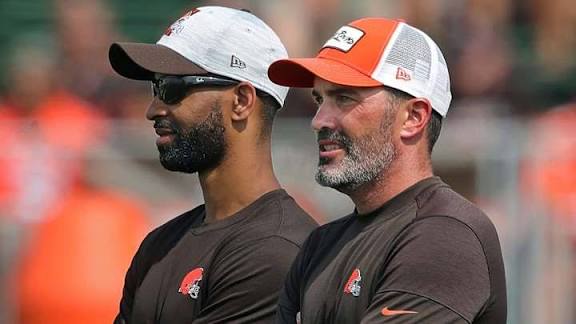I’m Luke Kerr-Dineen, Senior Editor for Game Improvement at Golf Digest and resident golf swing nerd. Golf IQ is my weekly newsletter where I’ll share insight from some of the smartest people in the game to help us all play better golf.
This is a special free edition of the Golf IQ newsletter to celebrate PGA Championship week.
You can keep receiving this (and more!) in-depth newsletters by subscribing to Golf Digest+ right here.
First, there’s an interlocking grip. This is when golfers link their hands together by intertwining the index finger of their lead hand (left hand for right-handed golfers; right hand for lefties) with the pinky on their other hand.
Here’s Tom Kim looking very pleased with his interlocking grip on the most recent cover of Golf Digest.
Jack Nicklaus, Tiger Woods, Ben Hogan, and Rory McIlroy are a few noted Interlockers.
Fun fact about Tiger’s interlocking grip: He’s hit so many millions of golf balls with it over the years, it’s actually changed the shape of his right pinky finger. Notice how it’s slightly crooked, and skinnier towards the bottom compared with his left pinky. If that’s not the sign of a man whose hit lots of golf balls, I don’t know what is.
An overlap grip is when a golfer joins their two hands by placing the pinky of their trail hand between the index and middle fingers on their lead hand.
Harry Vardon (who popularized the style), Sam Snead, Arnold Palmer, and Phil Mickelson are some noted Overlappers.
Here’s a nice picture of Francesco Molinari displaying his overlap grip.
And then there are 10-finger baseball grips, which are exactly that. Every finger is touching the club, with the pinky of your trail hand flush up against the index finger of your lead hand. You don’t see too many 10-finger grips.
Because clearly I have too much time on my hands, I decided to conduct a kind of golf grip audit on the 2024 PGA Championship field. Of the more than 150 players in the field at Valhalla, who is using what? And what can we learn?
Here’s how it breaks down. Interlocking, by a notable margin, is the winner.
And here’s how it breaks down for the 87 U.S. golfers in the field. More than 60 percent of American golfers playing this week interlock.
The sole player in the field using a baseball grip is one of the PGA professionals, Kyle Mendoza. I asked him why on Wednesday, ahead of the first round.
“I used to interlock, but my freshman year of college I shut a door on this finger,” he says, pointing to the pinky of his right hand. “I had this splint in my finger, so I played the whole season with that finger hanging off the club. When it heeled I tried to go back to interlocking, but there was no chance. I had no clubface awareness.”
There’s no real science as to who should use what grip, says Golf Digest Top 50 teacher Tony Ruggiero, who is here coaching Interlocker Andy Ogletree.
Tony says that generally speaking, golfers with longer fingers gravitate towards the overlap grips because interlocking grips can cause the pinky to wrap around awkwardly.
Golfers with smaller hands tend towards interlocking grips for the opposite reason: Their shorter fingers means the tip of their pinky fingers doesn’t nestle into the crest of their opposing hand enough. The right grip size for your hand shape can help make any style
“If they get their lead hand in the correct position on the club, I don’t care what grip you use,” Ruggiero says.
That’s, ultimately, what it comes down to. Making sure you see a couple of knuckles on your lead hand when you look down at it from setup; matching your trail hand grip with your body’s tendencies; and after you do both of that, settling on a style that feels natural.


